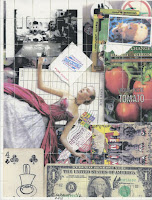Jean-Dominque Bauby was a well known author, journalist & editor for the French edition of Elle magazine, but at the age of 43, he suffered a stroke that left him completely paralyzed except for his left eye. The condition is called lock-in syndrome, which means the mind is fully intake & awake, but the body is immobile. Hope is not lost for Bauby, as therapists give him a way to communicate by blinking his left eye when the alphabet is dictated to him, allowing him to spell messages, one letter at a time. Bauby eventually finds solace when he decides to write a memoir on his experience.
 This unique biopic is inspired by Bauby's memoir of the same name & screenwriter Ronald Harwood translated it for the screen brillantly. There are many key moment in the film that are frustrating, humorous & moving. Notable scenes include Bauby's ex-wife translating Bauby's eye blinks for the girlfriend he left his wife for; or Bauby talking with his father, who is also locked-in, as he is too frail to leave his apartment. Director Julian Schnabel & cinematographer Janusz Kaminiski create dazzling effects & beautiful shots thoughtout the film to capture a picture inside Bauby's imagination. The film is often put in Bauby's point-of-view which leaves the viewer feeling hindered, uncomfortable & claustrophobic. This is an inspiring biopic about the power of the human mind with an art-house sensibility.
This unique biopic is inspired by Bauby's memoir of the same name & screenwriter Ronald Harwood translated it for the screen brillantly. There are many key moment in the film that are frustrating, humorous & moving. Notable scenes include Bauby's ex-wife translating Bauby's eye blinks for the girlfriend he left his wife for; or Bauby talking with his father, who is also locked-in, as he is too frail to leave his apartment. Director Julian Schnabel & cinematographer Janusz Kaminiski create dazzling effects & beautiful shots thoughtout the film to capture a picture inside Bauby's imagination. The film is often put in Bauby's point-of-view which leaves the viewer feeling hindered, uncomfortable & claustrophobic. This is an inspiring biopic about the power of the human mind with an art-house sensibility. 









